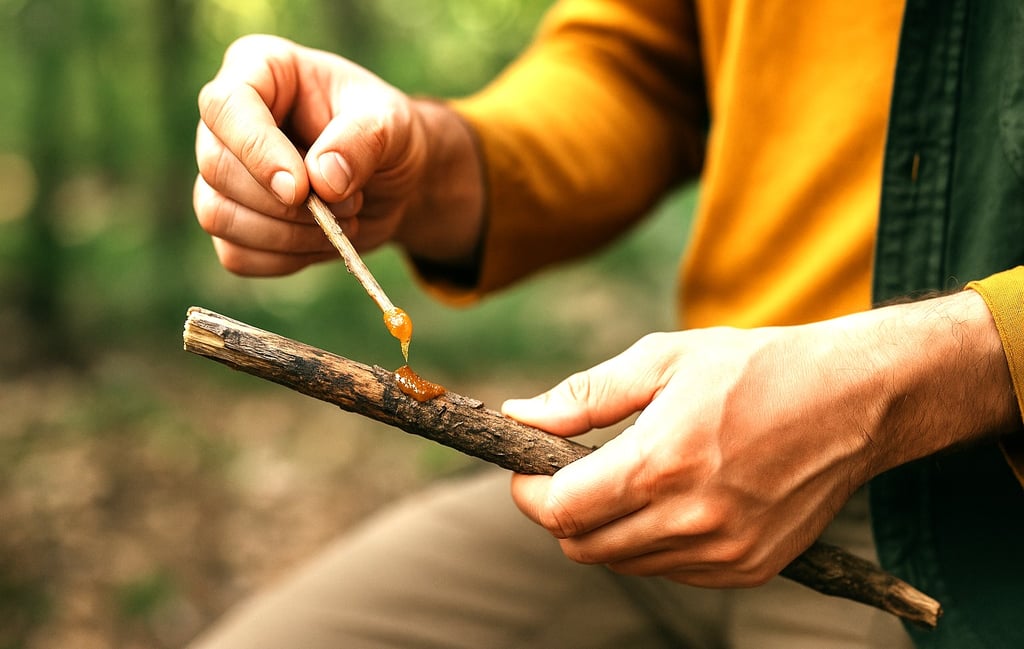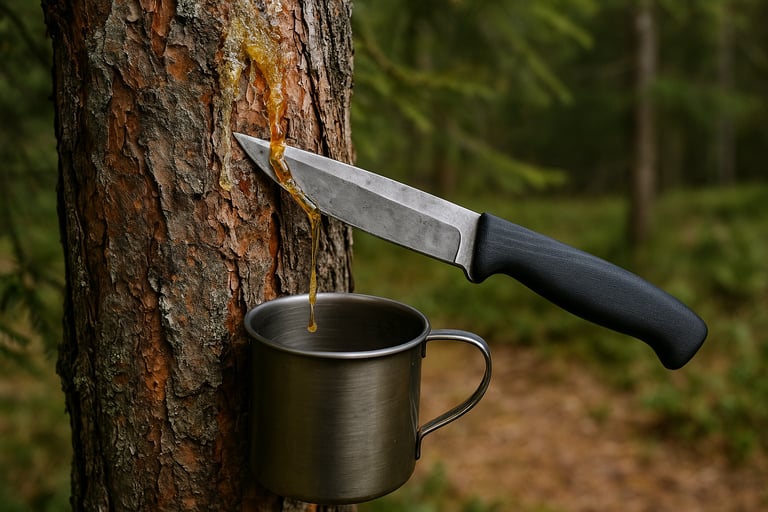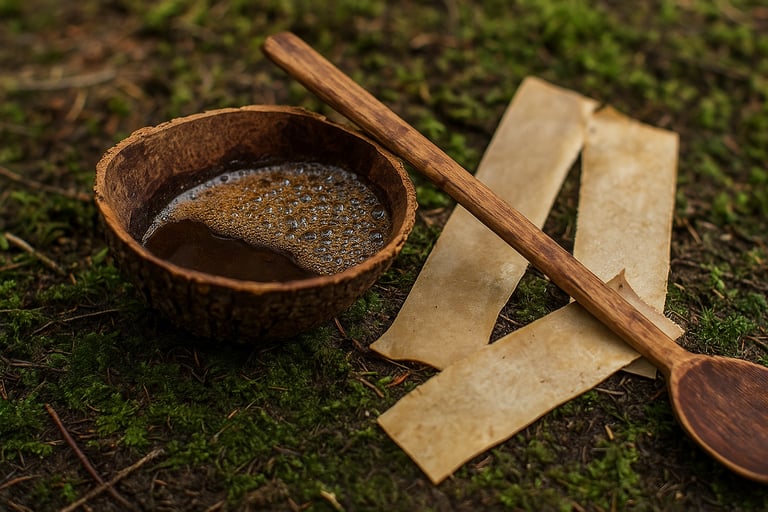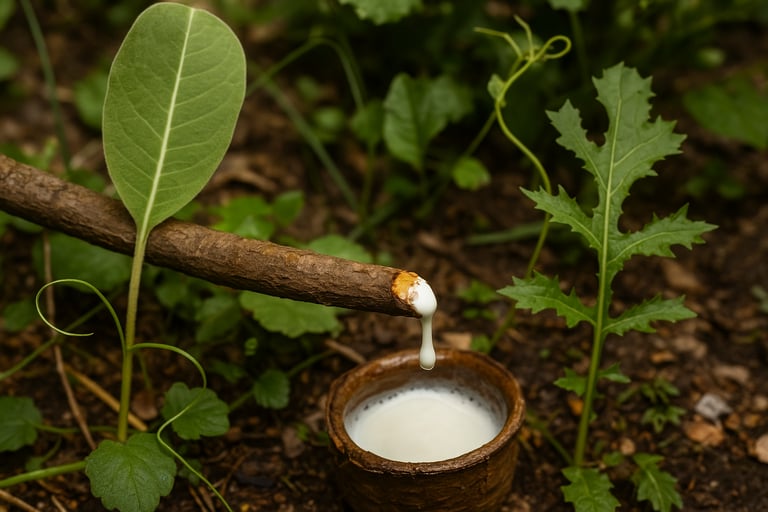Natural Glues and Adhesives: How to Make Sticky Solutions in the Wild
Learn how to make natural glue and primitive adhesives in the wild using tree resin, hide glue, and plant-based materials. A practical survival guide to wilderness glues for bushcraft repairs and tool-making.


Natural Glues and Adhesives: How to Make Sticky Solutions in the Wild
Why Natural Adhesives Matter in Wilderness Survival
When you’re deep in the wild and away from modern supplies, even something as simple as glue becomes incredibly useful. Whether you're repairing gear, building a shelter, or crafting tools, knowing how to make your own primitive adhesives gives you a major advantage. The good news? Nature offers everything you need to make strong, functional glue — you just need to know where to look and how to use it.
Tree Resin Glue: Nature’s Original Superglue
One of the strongest natural adhesives comes straight from coniferous trees like pine, fir, and spruce. Their sap — often called resin — is naturally sticky and water-resistant, making it perfect for wilderness repairs.
To make resin glue, find hardened sap on tree trunks and gently warm it over a fire until it liquefies. Once melted, mix in powdered charcoal and plant fiber or fur to create a thick, durable glue. Charcoal can also be made in the wild: here's a simple method for creating your own charcoal or biochar from natural materials. It hardens quickly, so apply it while it’s warm.
This glue works great for securing arrowheads, sealing cracks, or binding wood and stone tools. It’s especially useful when you're crafting your own primitive survival tools, like spears or stone blades in the backcountry.
Hide Glue: Turning Animal Parts into Adhesive
If you have access to animal parts from a hunt, you can create hide glue — a classic adhesive used for centuries. This glue is made by boiling scraps of rawhide, sinew, or even bones in water for several hours. As it breaks down, it forms a thick, sticky liquid that can bond wood, fabric, and leather.
Hide glue sets hard and is ideal for crafting or repairs, but it’s not waterproof, so avoid using it in wet environments. It's best kept warm during use to stay pliable.
Plant-Based Glue: A Vegan Option in the Wild
Some plants also produce adhesive materials that can work in a pinch. Look for natural latex or sticky sap in milkweed, wild lettuce, or certain vines. These glues aren’t as strong or long-lasting as resin or hide glue, but they can be useful for lightweight tasks like sealing containers or crafting small tools.
Always make sure to research and test any plant you use to avoid toxicity or skin irritation.
Tips for Using Natural Glue in the Wilderness
No matter what type of glue you’re using, preparation is key. Clean and dry the surfaces you're bonding. This is just like when you’re preparing to carve survival tools or make cordage, where prep work makes all the difference in success. Apply your glue while it’s warm, press the pieces firmly together, and secure them in place with cordage or stones while the glue sets.
Natural glues tend to dry hard and brittle, so try to avoid twisting or over-flexing the bonded area. With practice, you’ll be able to make quick repairs and create durable tools using nothing but what you find in the wild.






© 2025. All rights reserved About | Privacy Policy | Terms and Conditions | Affiliate Disclosure | Disclaimer


